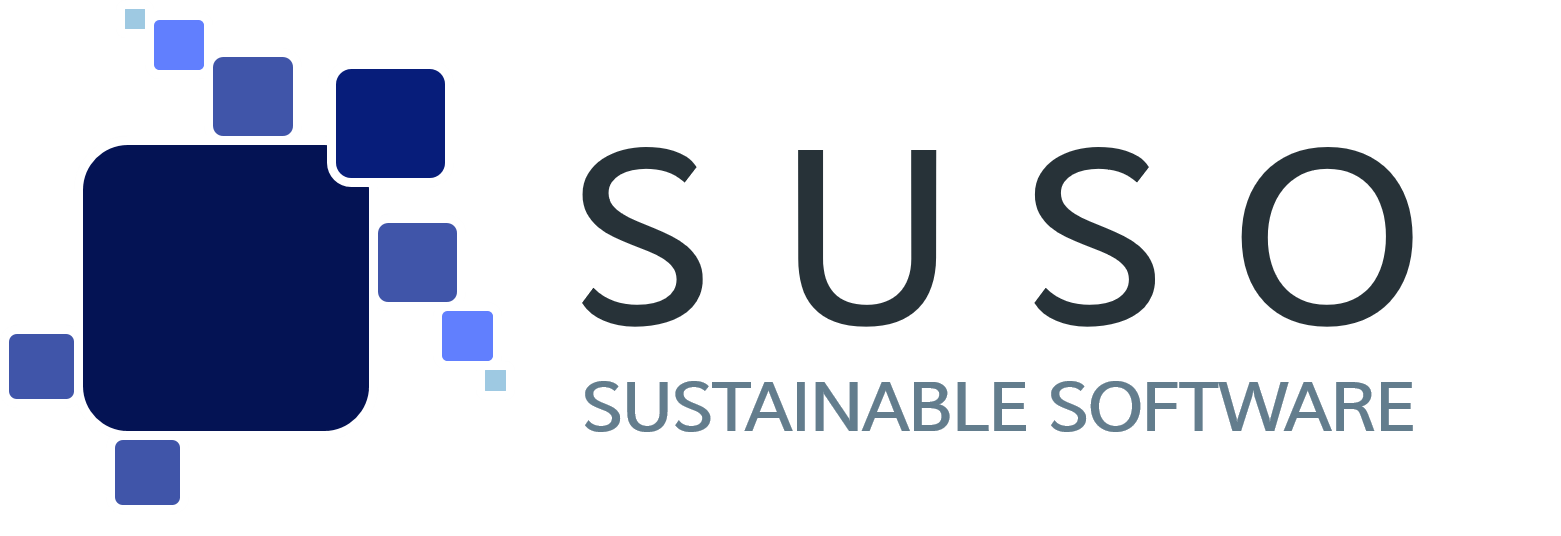Circular Economy: How Blockchain Technology can help implement sustainability
Sustainability and the circular economy are two concepts that are becoming increasingly important, especially in times of climate change and growing environmental pollution. The need for a sustainable economy that minimizes the consumption of resources and energy and reduces waste and pollution is becoming increasingly clear. Software and technology play an important role in implementing such an economy. New technologies and innovative approaches can help change the way we produce, consume and dispose. One technology that holds particular promise in this context is blockchain technology. Blockchain technology is known for its ability to provide transparency, security, and efficiency. It also offers opportunities for decentralized collaboration that facilitates the sharing of resources and data.
In this article, we will explore how blockchain technology can help create a circular economy focused on sustainability. We will look at the various aspects of this technology and provide concrete examples of its use in implementing circular economy models.
Before we get to blockchain: circular economy and sustainability
To understand how blockchain technology can help create a circular economy, we first need to clarify what circular economy means. And what advantages it has. Unlike the traditional linear economy, which is based on the idea of extracting raw materials, manufacturing products, consuming them and disposing of them, the circular economy starts from a closed system. Here, an attempt is made to keep resources and products in circulation for as long as possible and to produce as little waste as possible.
This principle is based on the three “R’s” of sustainability: reduce, reuse and recycle. By minimizing and reusing resources, the need to extract new raw materials can be reduced. Recycling materials allows waste to be minimized and turned into new products.
A circular economy offers many benefits to the environment and the economy. By reducing waste and pollution, we can minimize negative impacts on the environment. At the same time, a circular economy can also provide economic benefits by creating new business opportunities and jobs.
Sustainability plays a critical role in implementing a circular economy. The concept of sustainability refers to how we do business without depleting the earth’s resources and destroying the environment. This takes into account social, environmental and economic aspects. Thus, a sustainable economy should not only minimize resources and reduce waste, but also provide social and economic benefits. Social aspects refer to the impact on communities and the workforce, while economic aspects refer to profitability and growth.
What is blockchain technology not?
An important point that is often overlooked is the fact that blockchain technology is not the same as Bitcoin or other cryptocurrencies. Although, of course, they are closely related. Blockchain, in fact, is the underlying technology that allows data to be recorded and managed in a transparent and decentralized manner. Bitcoin and other cryptocurrencies are merely applications built on blockchain technology. Blockchain technology has the potential to have applications far beyond cryptocurrencies. It is a technology that allows data to be stored and managed in a secure and decentralized manner, which is relevant to many use cases in various industries. In terms of sustainability and circular economy, for example, blockchain technology offers the opportunity to improve resource traceability and make supply chains more transparent.
So what is blockchain technology?
Blockchain technology is a decentralized database. It is based on the fundamental idea of storing information transparently and securely without the need for a central authority. Unlike traditional databases, where a central authority controls the data, the blockchain is managed by a network of computers that work together to validate transactions.
The blockchain consists of a chain of blocks in which transactions are stored. Each block contains a cryptographic hash value that uniquely identifies it and links it to the previous block. This creates an immutable chain of blocks that cannot be manipulated.
Blockchain technology has many potential applications, especially in the financial and logistics sectors. For example, it can be used for secure and transparent money transfers or for tracking supply chains.
In terms of the circular economy, blockchain technology offers the possibility to track resources and products in a transparent and secure way. By tracking each step in the lifecycle of a product or resource on the blockchain, companies can ensure they come from trusted sources and are used responsibly.
Blockchain technology also makes it possible to create a digital identity for products and resources. For example, electronic labels can be tagged with information such as a product’s country of origin, materials, and lifespan. This information can then be stored on the blockchain and verified by all interested parties.
Another benefit of blockchain technology for the circular economy is that it enables the creation of decentralized marketplaces. These marketplaces can allow businesses and consumers to trade directly with each other and share or sell products or resources without the need for an intermediary.
Overall, blockchain technology offers many advantages for implementing a circular economy. It enables transparent and secure tracking of resources and products, the creation of digital identities, and the creation of decentralized marketplaces.
Use our tools for sustainable software
Our three tools help you acquire the knowledge, skills, and financial resources you need to develop sustainable software products and services that meet social, environmental, and economic needs. By using these tools, you can position yourself as a leader in sustainable software development and help create a better future for all.
The role of software and technology
Software and technology are playing an increasingly important role in sustainability and the circular economy. By using software and technology, companies and consumers can use resources and products more efficiently. And thus help to reduce environmental impact.
In the circular economy, software and technology solutions can help track the lifecycle of products and resources and ensure they are used responsibly. For example, digital platforms can be used to facilitate the exchange and reuse of products.
Blockchain technology offers particularly promising opportunities in this regard. It enables transparent and secure tracking of resources and products, creating trust and transparency in supply chains. Creating digital identities for products and resources can also help ensure that they are used responsibly. Another example of the use of software and technology in the circular economy is smart recycling systems. These systems use sensors and data analytics to optimize resource recycling and increase efficiency. There are also numerous opportunities for the use of software and technology in the area of energy efficiency. For example, smart power grids and building automation systems can help reduce energy consumption.
Overall, the use of software and technology offers many opportunities to promote the implementation of a circular economy and thus sustainability. Blockchain technology can play a particularly important role in this by enabling the tracking and monitoring of resources and products in a transparent and secure manner.
Practical applications of blockchain technology
There are already some concrete applications of blockchain technology in the field of sustainability and circular economy. One example is the Plastic Bank project, which aims to reduce plastic waste in developing countries. The organization collects plastic waste from residents and gives them digital tokens in return. These can be vested for goods and services. The collected plastic waste is then sold to recycling companies, which use it to make new products. Blockchain technology is used here to make the transactions and flow of plastic waste transparent.
Also worth mentioning is the “Provenance” project, which specializes in product tracking. The company uses blockchain technology to track the origin and journey of products from production to sale. This allows consumers to better understand the history of products and companies to make their supply chains more responsible.
There are also applications of blockchain technology in the energy sector. For example, the city of New York has launched a project called the “Brooklyn Microgrid“, which aims to produce and distribute renewable electricity locally. Blockchain technology is used here to make the exchange of energy between households secure and transparent.
Despite the promising applications of blockchain technology, there are also implementation challenges. One major challenge is scaling the technology to enable wider application. The issue of interoperability between different blockchains and integration with other technologies also remains a challenge.
Nevertheless, there are already many companies and organizations using blockchain technology in the sustainability and circular economy sectors and achieving success. More sustainable solutions can be found through the continued use and development of the technology.
Challenges and risks of blockchain technology
When implementing blockchain technology in the field of sustainability and circular economy, there are also challenges and risks that need to be considered.
One of the challenges is the complexity of the technology. Implementation requires both technical and business expertise to ensure that the system works effectively. There is also a need to establish trusted nodes and secure infrastructure to ensure the integrity of the data.
Another challenge is that blockchain technology is still in the development phase and is changing rapidly. New technologies and protocols are constantly being developed, and there is a need to stay current and respond quickly to changes.
Scalability is also a challenge within the technology. Although there are promising applications of blockchain technology, the technology still needs to evolve to enable wider adoption.
There are also risks associated with blockchain technology. One of these risks is the potential energy consumption associated with mining activity. Mining blockchain transactions requires a large amount of energy and can therefore result in high CO2 emissions.
There is also the possibility that blockchain technology is vulnerable to attack. However, the decentralized nature of blockchain technology can help minimize the risk of data loss and theft.
In conclusion, it is important to emphasize that Blockchain technology can potentially be very useful in implementing sustainability and the circular economy. However, it is necessary to carefully consider and evaluate the challenges and risks associated with implementing this technology.
Conclusion
Overall, it can be said that sustainability and the circular economy are becoming increasingly important in order to protect our planet and make companies fit for the future. Blockchain technology offers a promising potential solution in this regard, as it enables transparency, efficiency and traceability.
By using blockchain technology, businesses and consumers can better control and reduce their material and energy consumption. This can not only lead to cost savings, but also help conserve resources and combat climate change.
There are already many exciting projects and initiatives using blockchain technology to promote a circular economy and sustainability. Nevertheless, there are also challenges and risks to consider, such as the complexity of the technology and the issue of scalability.
Nevertheless, the future of the circular economy and sustainability is closely linked to blockchain technology. The technology offers a promising opportunity to build a more sustainable and efficient economy. It remains to be seen what developments and trends can be expected in this area in the future, but the importance of sustainability and the circular economy is undeniable and should be pushed further in the software and technology industry.





